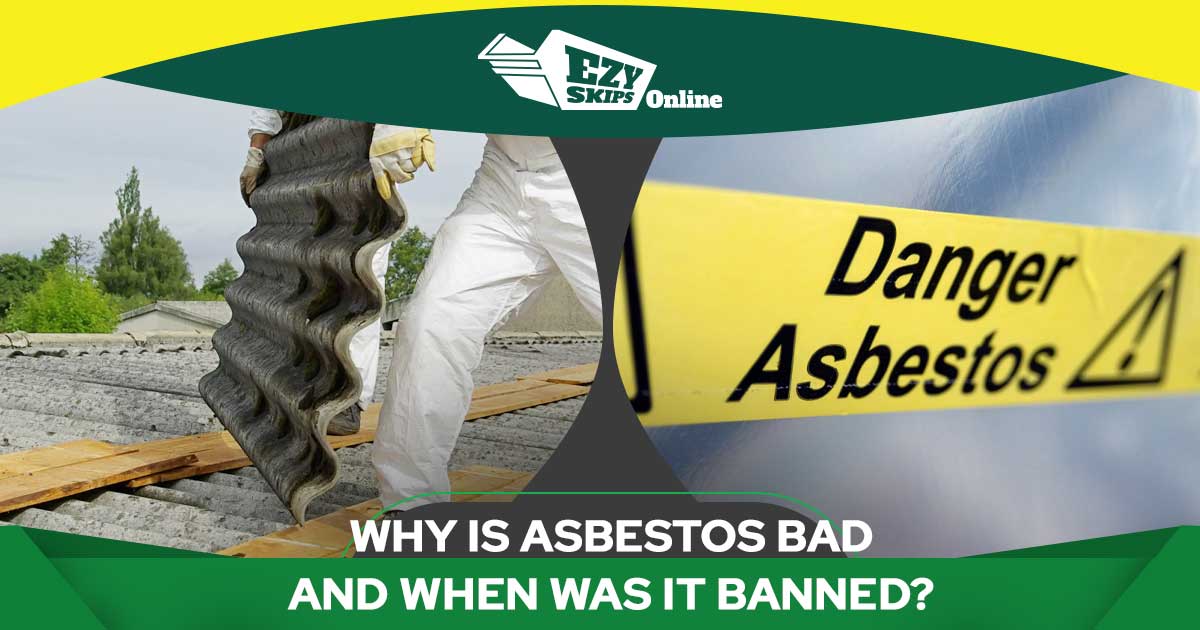
Asbestos is a group of naturally occurring minerals made up of tiny fibres. These fibres are heat-resistant and strong, which is why asbestos has been widely used in buildings and various products for many years.
You could find it in things like insulation, flooring, roofing, and even some automotive parts. However, as research uncovered the dangerous effects of asbestos, many countries, including Australia, took significant steps to limit and eventually ban its use.
Why Is Asbestos Dangerous?
The danger of asbestos lies in its fibres. When these tiny fibres are disturbed, they can become airborne.
If inhaled, they can get trapped in the lungs. Over time, this exposure can lead to severe health problems. The most alarming conditions associated with asbestos exposure include:
- Lung Cancer
This is a type of cancer that develops in the lungs and is often linked to asbestos exposure. - Mesothelioma
This is a rare form of cancer that affects the lining of the lungs and abdomen and is almost exclusively caused by asbestos. - Asbestosis
This is a chronic lung disease caused by long-term exposure to asbestos. It leads to scarring of lung tissue and can cause breathing difficulties.
Because of these serious health risks, asbestos is considered a dangerous material, and its use has sharply declined in many regions around the world.
The Ban on Asbestos in Australia
Asbestos use was completely banned in Australia on December 31, 2003. This nationwide ban was a major step toward protecting public health.
Before this ban, Australia had one of the highest rates of asbestos usage in the world. Asbestos was even mined in Australia until 1984, and around 1.5 million tonnes were imported between 1930 and 1983.
The ban made it illegal to import, store, sell, install, or reuse any asbestos materials. This decision came following a series of tightening government regulations and improved workplace health and safety laws.
Unions played an essential role, advocating for safer working conditions and pushing for the ban on this dangerous material.
The Risks of Existing Asbestos
While the ban prohibits new use of asbestos, buildings constructed before 1990 often still contain asbestos materials. It’s estimated that about one-third of homes in Australia have some form of asbestos in them.
This presents an ongoing risk, especially in older buildings. It’s crucial to understand that having asbestos in a building doesn’t necessarily mean it will cause harm.
If the material is intact and undisturbed, it may not pose an immediate danger. However, renovations or damage can release asbestos fibres into the air, which is when the risk becomes significant.
Regulations for Handling Asbestos
To manage the dangers associated with existing asbestos, the Australian government has put strict regulations in place. Only licensed professionals are allowed to remove and dispose of asbestos-containing materials.
These experts are trained to handle asbestos safely and follow specific guidelines to ensure public safety. If you suspect your home or workplace may contain asbestos, it’s essential to consult with an accredited asbestos removalist.
They can assess the situation and guide you on the best steps to take, whether it’s leaving the material alone or safely removing it.
What to Do if You Find Asbestos
If you discover asbestos in your home or property, here are some important steps to follow:
- Do Not Disturb It
If the asbestos material is in good condition and not falling apart, leave it alone. Disturbing can release fibres into the air. - Get Professional Help
Contact a licensed professional to assess the situation. They can inform you whether the asbestos needs to be removed or if it can remain safely in place. - Follow Guidelines
If removal is necessary, ensure that the professional follows all safety protocols and regulations. - Stay Informed
Educate yourself about asbestos and its associated risks. Being aware can help you make informed decisions about your property and health.
Asbestos was once viewed as a miracle material due to its strength and insulation properties. However, its serious health risks have rightfully earned it a notorious reputation.
The complete ban on asbestos in Australia at the end of 2003 was a critical step in protecting public health from the dangers posed by this hazardous material. With many older buildings still containing asbestos, it’s important to stay informed, especially if you’re planning renovations or clean-ups—consider using skip bin hire Rockingham by Ezyskips Online for safe and easy disposal of any type of waste.
Always consult licensed professionals when dealing with potential asbestos in your home or workplace. For further information on managing asbestos and to learn more about safety guidelines, you can visit reputable resources like Asbestos Awareness, or if you need assistance with disposal, contact us for skip bins online in Rockingham to help you manage the waste safely.
Understanding the risks and regulations surrounding asbestos helps keep you and your loved ones safe, ensuring that we learn from the past and protect our future.

